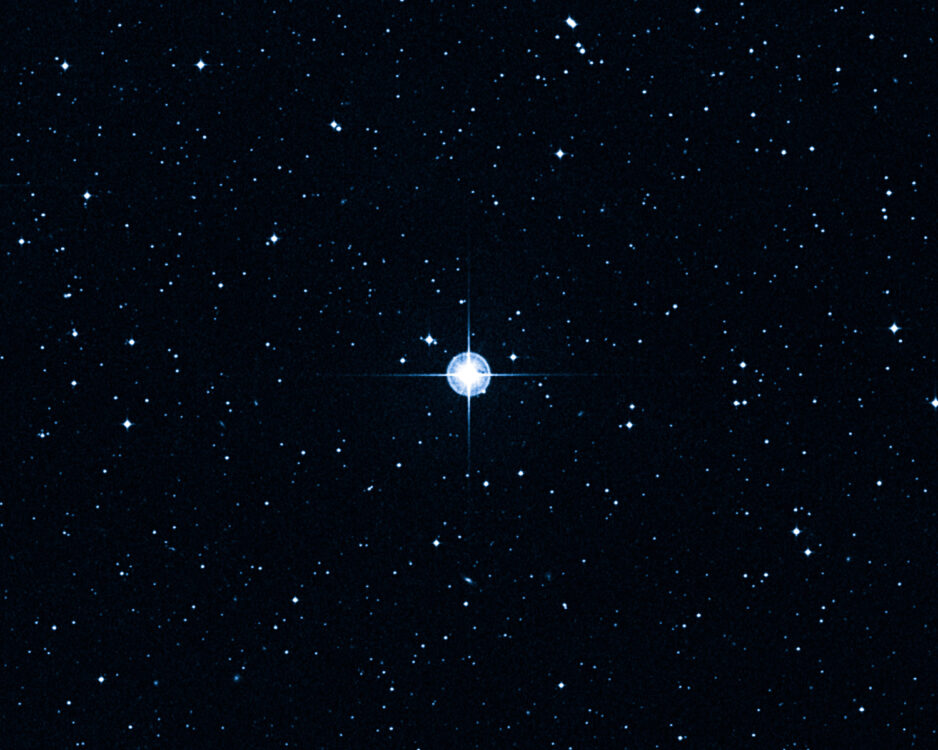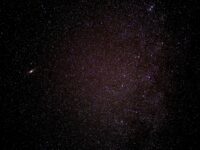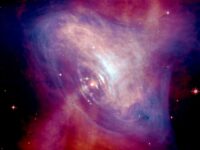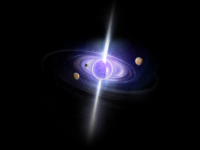The recent discovery of a peculiar supernova remnant has solved an 850-year-old mystery, and a new investigation is already forming in its place.
In 1181, Chinese and Japanese astronomers observed a “guest star,” or the origin of a supernova, which they identified as SN 1181. It appeared as a dim expanding nebula that was as bright as Saturn and visible for six months. It was not until 2021 that astronomer Andreas Ritter and his colleagues at the University of Hong Kong were able to identify the explosion as the SN 1181 supernova remnant Pa 30.
Even before Ritter and his team connected the two events, the Pa 30 nebula had been a puzzling topic of interest. Pa 30 surrounds a Wolf-Rayet star called Parker’s Star, which is a particularly rare type of old white dwarf star. It is one of the strangest stars in the Milky Way. In 2019 astronomer Vadilii Gvaramadze at Lomonosov Moscow State University discovered that Parker’s Star has a stellar wind traveling outwards at 16,000 kilometers per second, which is 5% of the speed of light. It is rare for stars involved with supernovas to have winds that fast, since the explosion takes away most of their energy.
In the 2021 study, Ritter and his team first used Pa 30’s rate of expansion to determine that it originated 1,000 years ago. This age corresponds with the 1811 supernova sighting. Additionally, the location of Parker’s Star matched with the ancient Chinese records of the guest star’s location. The alignment of Parker’s star and Pa30’s age and location with the events of 1181 strongly suggests that they are both remnants of SN 1181.
“Many thin filaments appeared to be flying outwards from the center star of Pa 30, similar to a fireworks display.”
While analyzing Pa 30, the team also noticed that its emission spectrum had a particular line for the element sulfur, which led them to theorize that two white dwarfs collided and merged to produce Pa 30 and Parker’s Star. If one star was made mostly of carbon and oxygen and the other of oxygen and neon, they would produce the high amount of sulfur present in Pa 30 upon collision.
The merging of two white dwarfs is a rare supernova explosion of type-Iax, which is a subcategory of the familiar type-Ia supernova. Type-Ia occurs in a binary system, where a white dwarf star extracts hydrogen and helium from a companion star until it grows too large and implodes quickly, leaving behind a web of gas and dust. In type-Iax, however, the star survives the explosion and becomes a zombie star, or a massive white dwarf like Parker’s Star. Although much remains to be understood about type-Iax supernovae, the description of SN 1181 appears to fit this category.
“In type-Iax, however, the star survives the explosion and becomes a zombie star, a massive white dwarf like Parker’s Star.”
In 2023, Robert Fesen, an astronomer at Dartmouth College, and his team conducted a study in which they ran an optical filter, which transmits a specific wavelength of light, over an image of the remnant that showed how much of the sulfur was in the Pa 30 nebula. The results displayed very high amounts, which supports the theory that Pa 30 was the remains of SN 1181. The filter also returned an image of a supernova unlike any other that has been photographed. Numerous thin filaments appeared to be flying outwards from the center star of Pa 30, similar to a fireworks display. This unique image unlocked a new path in determining the mechanism of type-Iax supernovae, and it corresponds with Ritter and his team’s theory that Pa30 was a result of the collision of two white dwarfs. This type of collision would be explosive enough to cause the fireworks of Pa 30 while leaving behind a zombie star.
Another fascinating aspect of SN 1181 is its proximity to Earth relative to other rare explosions that occur in distant galaxies. Currently, scientists are working with the Hubble Space Telescope and the James Webb Space Telescope to capture detailed images of Pa 30 that will hopefully shed more light on its origin. For now, SN 1181 is the only remnant where researchers can study the nebula and the merged star along with the historical account of the event. Its unique existence holds promise in unraveling the mystery of white dwarf mergers and type-Iax supernovae.
Image courtesy of Wikimedia Commons






